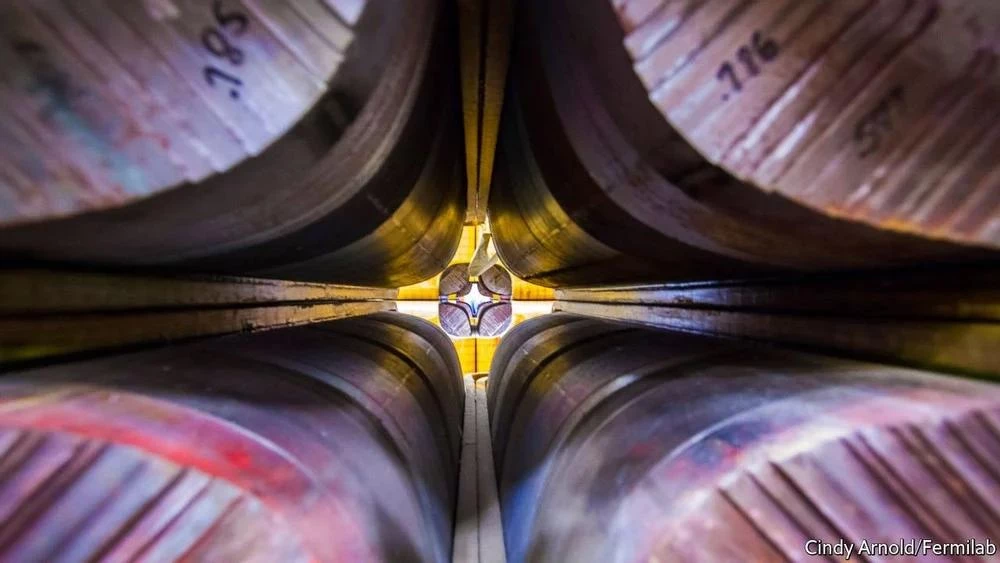
The study in question, called Muon g-2, used a superconducting storage device (pictured) to look at the magnetic behaviour of muons. Experiments conducted with this machine at Brookhaven National Laboratory, in New York state, in the 1990s, had suggested an anomaly in such behaviour—a deviation of about 0.1% from theoretical predictions about the way that muons should spin in magnetic fields—but without sufficient statistical power to be sure. If this anomaly were real, it would suggest that an unknown force was tugging on the muons in the experiment.
To have another go at finding out, the storage device was shipped to Fermilab, outside Chicago, in 2013. There, it was linked to equipment which gave it more oomph. This boost has, indeed, confirmed the previous result—though irritatingly not quite unambiguously enough for physics’ finicky requirements. These demand “five sigma” of significance (five standard deviations from the mean, for the mathematically inclined). The new data, added to the old, and announced on April 7th, give only 4.2 sigma. That, nevertheless, suggests there is only one chance in 40,000 that the result is a fluke...
The Economist: A second possible break in the laws of physics has been noted


